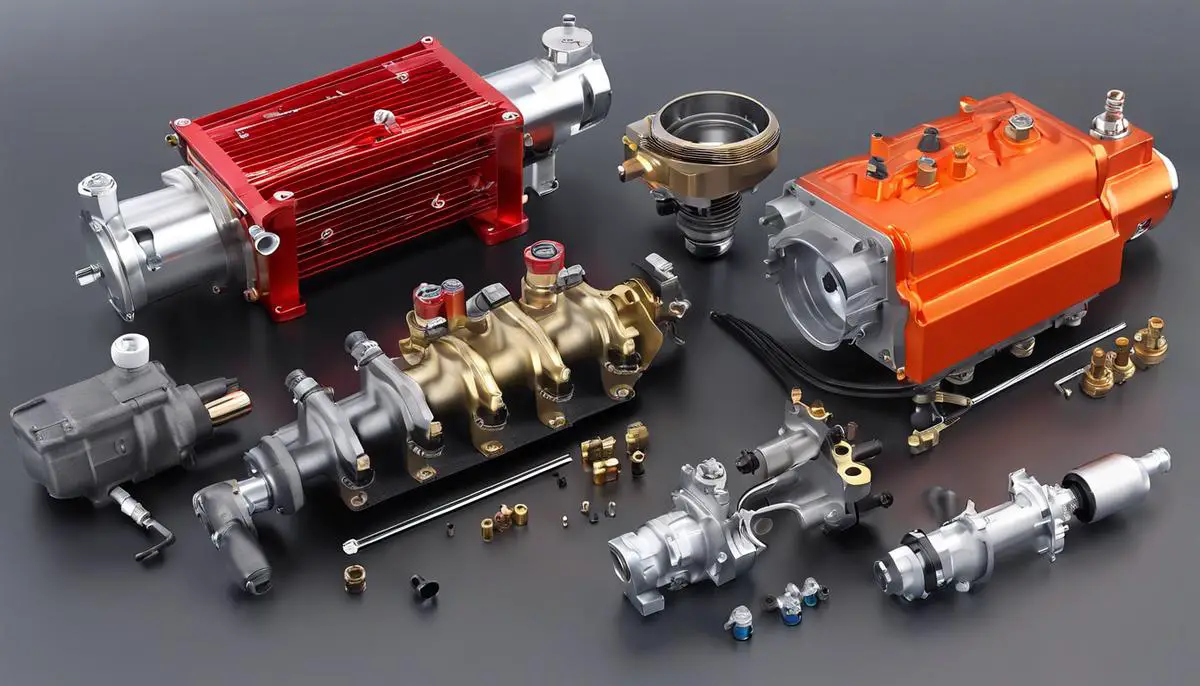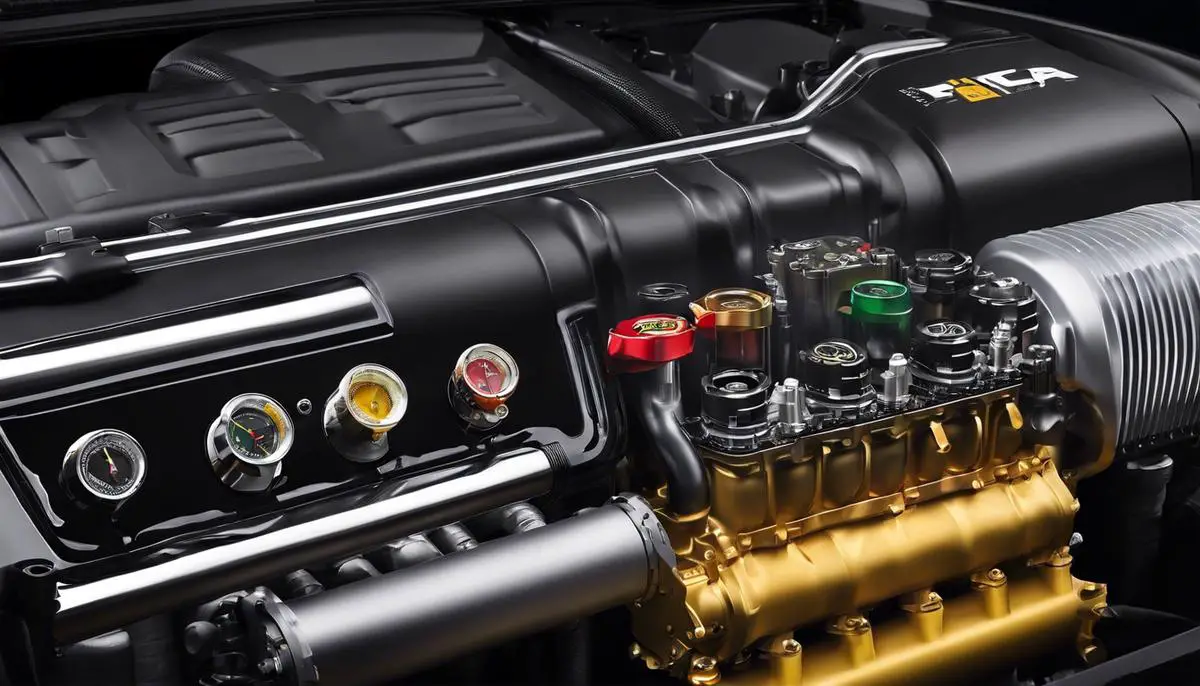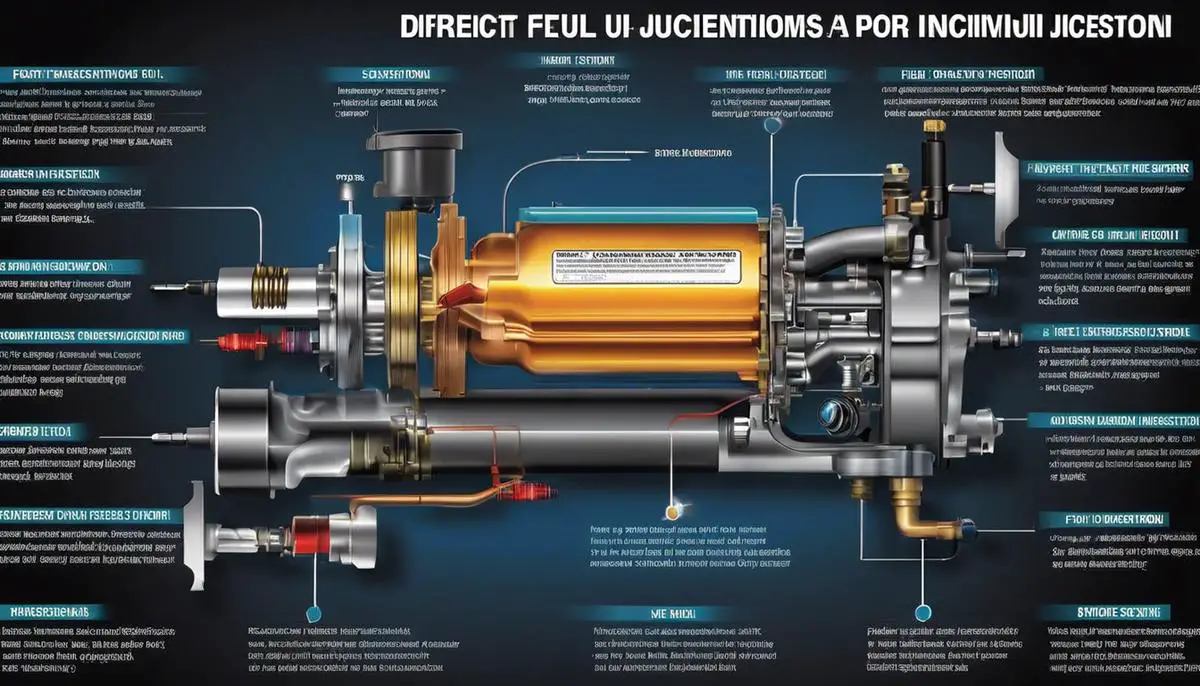Understanding the inner workings of an engine can often seem like a complex and baffling task. However, getting a proper grasp of critical components like the fuel injection system can make a significant difference in how you choose and maintain your vehicle or any other motorized equipment. The fuel injection system, with its multiple variants from direct to port or multi-point injections, holds a central role in determining the overall performance, reliability, and fuel efficiency of the engine. This article will guide you through the basic principles behind each type of the injection systems, demonstrate why this information is vital when looking at engine specifications, and provide practical advice on how to identify and choose engines based on their fuel injection systems for the best possible user experience.
Contents
- 1 The Basics of Fuel Injection Systems
- 1.1 Fueling Passion: Exploring the Different Types of Fuel Injection Systems
- 1.2 First, let’s start with the basics. A fuel injection system is a highly sophisticated part of a vehicle that introduces fuel into the engine’s cylinders. The main advantage? It aids in delivering precise amounts of fuel into the combustion chamber, ensuring your car runs smoothly and more efficiently.
- 1.3 Throttle Body Injection (TBI)
- 1.4 Multi-Port Fuel Injection (MPFI)
- 1.5 Direct Fuel Injection (DFI)
- 1.6 Sequential Fuel Injection (SFI)
- 2 Why Fuel Injection Type Matters in Engine Specs
- 3 How to Identify and Choose Engines Based on Fuel Injection Systems
The Basics of Fuel Injection Systems
Fueling Passion: Exploring the Different Types of Fuel Injection Systems
Who among us hasn’t been captivated by the heart-pounding rev of a car engine? It’s a symphony of power and precision, intriguing in its complexity. A huge part of that roar comes from the engine’s lifeblood: the fuel. The idea of fuel injection systems might sound sophisticated, but fear not, we’re here to delve into the details, making them perfectly understandable for any car enthusiast. So, gear up and ride along as we uncover the different types of fuel injection systems and learn how they operate.
First, let’s start with the basics. A fuel injection system is a highly sophisticated part of a vehicle that introduces fuel into the engine’s cylinders. The main advantage? It aids in delivering precise amounts of fuel into the combustion chamber, ensuring your car runs smoothly and more efficiently.
So now that we have the foundation, let’s examine the different types of fuel injection systems.
-
Throttle Body Injection (TBI)
The Throttle Body Injection system, sometimes referred to as a single-point injection system, mimics a carburetor. The fuel injector is placed above the throttle body. The fuel blend is then sprayed into the throttle bore and mixed with incoming air. Here, a single injector sprays fuel into the throttle body itself. It’s simple, cost-effective, but not as precise as other systems.
-
Multi-Port Fuel Injection (MPFI)
MPFI, also known as Port Fuel Injection (PFI), introduces fuel into the intake port, right in front of each cylinder’s intake valve. Unlike TBI, MPFI uses multiple fuel injectors to squirt fuel directly into each intake port in a sequence. This ensures better distribution and allows for more precise control.
-
Direct Fuel Injection (DFI)
DFI, or Gasoline Direct Injection (GDI), blends the best aspects of TBI and MPFI. The fuel injector is located directly inside each cylinder, firing fuel straight into the combustion chamber, bypassing the intake tract completely. This direct action results in improved fuel efficiency and increased power output.
-
Sequential Fuel Injection (SFI)
SFI takes a step further from MPFI, improving the timing of fuel delivery. While MPFI injects fuel to all cylinders simultaneously, SFI injects fuel individually to each cylinder at the exact time it needs it. This precision optimizes power and efficiency, making SFI preferred in high-performance scenarios.
Each of these systems has its merits, and the choice often boils down to a balance between cost, complexity, and power efficiency. In the end, it’s all about making your beloved ride run smoothly, powerfully, and efficiently. Hopefully, this guide has given you a better grasp of the technology that keeps our engines revving and our hearts racing. Happy driving!

Why Fuel Injection Type Matters in Engine Specs
The type of fuel injection plays a pivotal role in engine performance. When checking out the specifications of an engine, you may have noticed the type of fuel injection system is often noted. Why does this matter, particularly to a car enthusiast or hobby mechanic? Let’s find out.
When comparing fuel injection systems, it’s akin to understanding the differences between tools in a toolbox. They all serve essential functions, but for different purposes, and with varying levels of efficiency. In keeping up with your car’s maintenance, appreciating the type of fuel injection system used can offer significant advantages.
A Throttle Body Injection (TBI) system, for example, supplies fuel to the throttle body, similar to a carburetor. It’s a simple, cost-effective system. However, the fuel distribution might not be optimal when compared to a more advanced system.
The Multi-Port Fuel Injection (MPFI) system provides a dedicated injector for each cylinder, offering a better air-fuel mixture and combustion efficiency. This is beneficial in terms of performance and fuel efficiency, but comes with a more intricate design and higher cost.
The Direct Fuel Injection (DFI) system takes it a step further, injecting fuel directly into the combustion chambers of each cylinder. This results in higher power output, improved fuel economy, and reduced emissions. But, these benefits come at the cost of more complex engine management and potential carbon build-up in the intake valves.
More advanced yet is the Sequential Fuel Injection (SFI) system. This type of system times the fuel injection to coincide with the intake valve opening, offering more precise fuel control and efficient combustion. Again, the trade-off here is more complexity in design and cost.
Alongside the advantages, each type of fuel injection system has considerations to bear in mind. TBI, for instance, is simple and affordable but may not always provide the best performance. Similarly, an MPFI system could offer better fuel efficiency but might require more frequent maintenance due to its design. The DFI system raises power and lowers emissions, however, it might necessitate cleaning or even replacement of intake valves as a result of carbon deposits over time. And lastly, the SFI might have advanced fuel control capabilities, yet this complexity in operation may result in more maintenance and higher overall costs in the long run.
So, why is it important for an enthusiast or hobbyist to know about these different systems? Well, it helps us better understand what goes on under the hood of our precious rides. It also helps us make informed decisions when it comes to buying a new vehicle or when contemplating an upgrade. Knowing and understanding our car’s fuel injection system can help us optimize performance, manage maintenance, and ultimately, better enjoy the ride.
So, next time you take a peek under the hood, or you’re checking out the specs of your dream car, remember to consider the type of fuel injection system. It’s not just a line on a specification sheet, it’s the heart of your engine’s performance. A good enthusiast knows their car inside and out, and that understanding begins with the knowledge of how fuel gets into the cylinders.
So there you have it, why the type of fuel injection outlined in engine specifications should matter to you. It’s all about knowing your ride and what makes it tick!

How to Identify and Choose Engines Based on Fuel Injection Systems
Identifying Fuel Injection Systems in Automobile Engines
Getting hands-on with your vehicle’s mechanics is a joy unrivaled for car enthusiasts. The question of fuel injection type in an engine ranks high among topics that, though often overlooked, greatly matter for your vehicle’s performance.
For a quick identification of your engine’s fuel injection system, you can observe where the fuel injector is located and how it delivers fuel to the engine. When inspecting, keep in mind that the different fuel injection systems (TBI, MPFI, DFI, SFI) we’ve previously covered each house the fuel injectors in varying engine zones. Does the injector concurrently deliver fuel to all cylinders, or does it target each separately? Answers to such questions can usually determine your fuel injection type.
Having identified your fuel injection system, the querying shouldn’t stop there. Consider how your choice aligns with your driving needs and desires. For example, if you’re all about that raw power, then a Direct Fuel Injection (DFI) system, revered for its high performance, might suit you. However, if fuel efficiency and engine reliability are your main concerns, then the Multi-Port Fuel Injection (MPFI) system deserves your attention.
The Sequential Fuel Injection (SFI) system is another good option to look into. Enjoy the best of both worlds since this type offers advantages from the MPFI and DFI systems, though its complexity could make maintenance slightly more challenging. Of course, for the hobby mechanic, a challenging maintenance task could translate into an exciting project!
Similarly, the Throttle Body Injection (TBI) system, often dubbed the ‘simple and economical’ choice, might be the perfect fit for those who prize effortless and affordable maintenance over high performance. Ultimately, the choice depends on your unique needs and preferences as a driver and car enthusiast.
Knowing your fuel injection system is beyond practical; it affects the thrill of the ride! On winding roads, the rush from knowing your engine’s inner workings complements the sensation of speed and raw mechanic power. For the car enthusiast, the choice of fuel injection system is as personal and significant as the vehicle itself. It’s more than driving – it’s understanding and cherishing every component that makes your car, your ride unique. ‘Knowledge’ after all, isn’t merely power—it’s the heart of every great hobby.
Knowledge of your fuel injection system may indeed be a drop in the ocean of automobile mechanics, but, as each drop makes up the ocean, so does every component contribute to the master marvel that is an automobile. Here’s to fewer stops at the gas station, smoother rides, and that ever-delighting rev of a well-kept engine!

Understanding engines and being able to make the best choice based on fuel injection systems is a powerful tool in the hands of any motor enthusiast. By comprehending the role, the different types and the consequences of varying fuel injection systems, you can not only enhance your vehicle’s performance and reliability but also contribute to a healthier environment by opting for more fuel-efficient and low-emission choices. Keeping in mind your vehicle’s specific use, personal preferences, maintenance capability, and potential environmental impact will enable you to select an engine that caters to your unique needs. Happy trails on your journey of insightful decision-making in the world of engines and their marvels!



